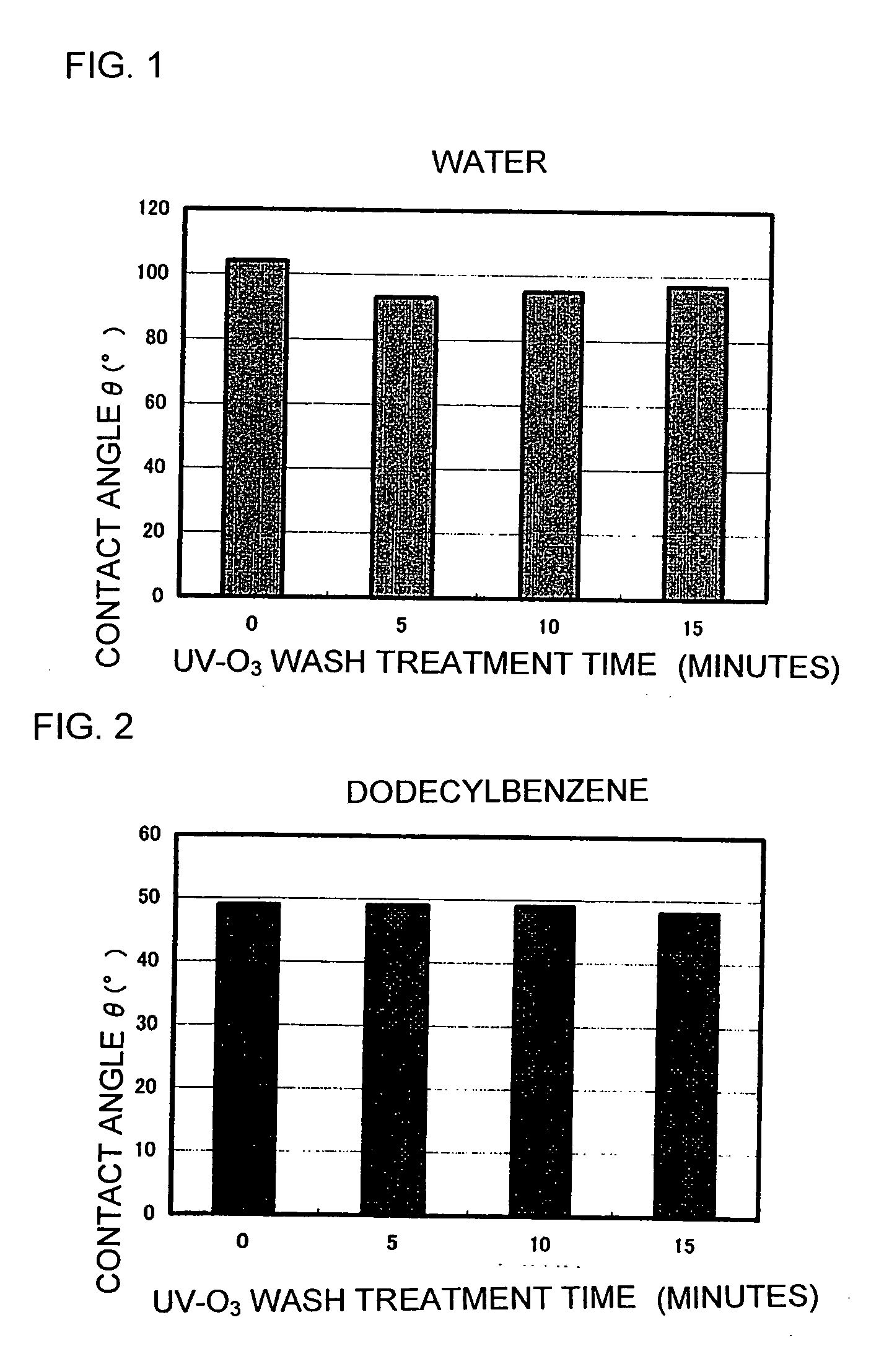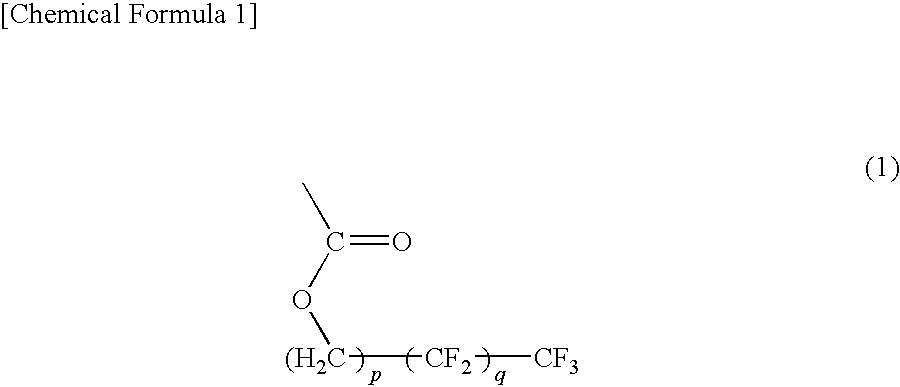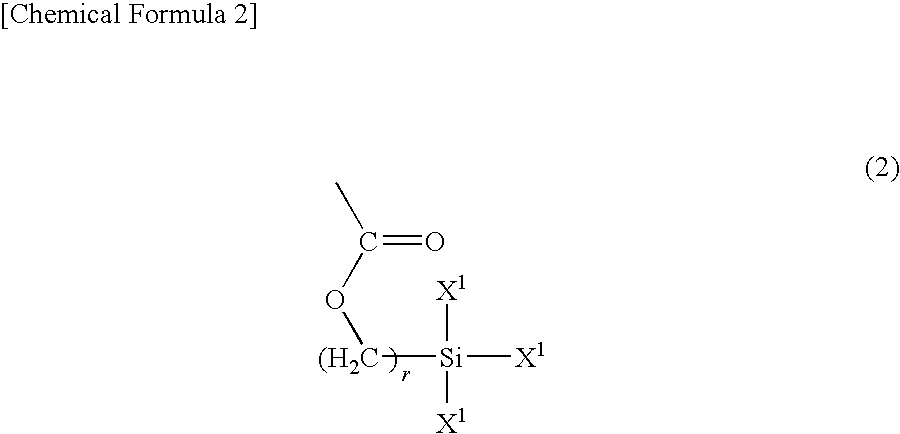Positive photosensitive resin composition
- Summary
- Abstract
- Description
- Claims
- Application Information
AI Technical Summary
Benefits of technology
Problems solved by technology
Method used
Image
Examples
synthesis example 1
[0182]As monomer components constituting a specific copolymer, 12.5 g of MAA, 16.7 g of PFMA, 20.8 g of HEMA, and 48.9 g of TMSSMA were used. As an initiator of radical polymerization, 3.7 g of AIBN was used. The components and the initiator were subjected to a polymerization reaction in 307.8 g of PGMEA as a solvent at a temperature of 60° C. to 110° C. to obtain a solution of the component (A) (the specific copolymer) having Mn of 10,700 and Mw of 16,000 (the concentration of the specific copolymer: 25.0% by mass). (PI)
synthesis example 2
[0183]As monomer components constituting a copolymer, 15.5 g of MAA, 35.3 g of CHMI, 25.5 g of HEMA, and 23.7 g of MMA were used. As an initiator of radical polymerization, 5 g of AIBN was used. The components and the initiator were subjected to a polymerization reaction in 185 g of PGMEA as a solvent at a temperature of 60° C. to 100° C. to obtain a solution of the copolymer having Mn of 4,100 and Mw of 7,600 (the concentration of the copolymer: 35.0% by mass). (P2)
synthesis example 3
[0184]As monomer components constituting a copolymer, 7.5 g of MAA, 20.0 g of MMA, 10.0 g of HEMA, and 12.5 g of PFMA were used. As an initiator of radical polymerization, 1.59 g of AIBN was used. The components and the initiator were subjected to a polymerization reaction in 154.7 g of PGMEA as a solvent at a temperature of 60° C. to 100° C. to obtain a solution of the copolymer having Mn of 12,600 and Mw of 20,300 (the concentration of the copolymer: 25.0% by mass). (P3)
PUM
 Login to view more
Login to view more Abstract
Description
Claims
Application Information
 Login to view more
Login to view more - R&D Engineer
- R&D Manager
- IP Professional
- Industry Leading Data Capabilities
- Powerful AI technology
- Patent DNA Extraction
Browse by: Latest US Patents, China's latest patents, Technical Efficacy Thesaurus, Application Domain, Technology Topic.
© 2024 PatSnap. All rights reserved.Legal|Privacy policy|Modern Slavery Act Transparency Statement|Sitemap



